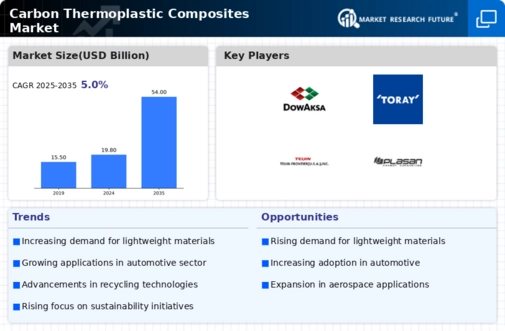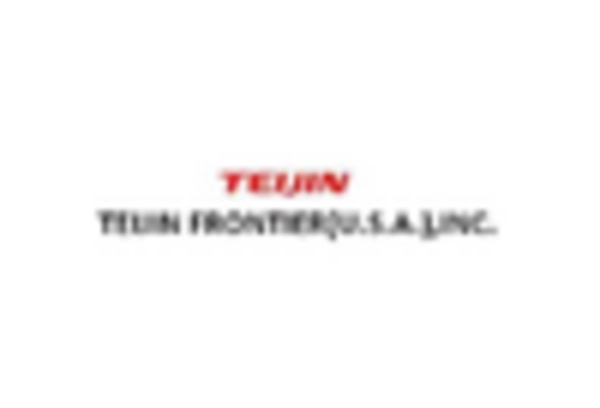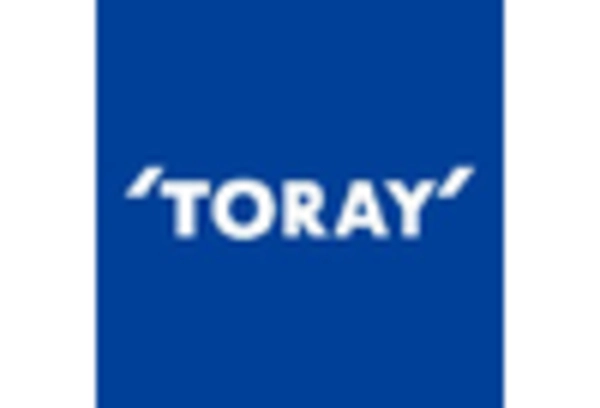-
Executive Summary
-
Market Introduction
-
Market Definition
-
Scope of the
-
Study
-
List
-
of Assumptions
-
Markets Structure
-
Market Research Methodology
-
Research Process
-
Primary Research
-
Secondary Research
-
Market Size Estimation
-
Forecast
-
Model
-
Market Dynamics
-
of the Global Carbon Thermoplastic Composites Market
-
Introduction
-
Drivers
-
Restraints
-
Opportunities
-
Challenges
-
Trends/Technology
-
Market Factor
-
Analysis of the Global Carbon Thermoplastic Composites Market
-
Supply Chain Analysis
- Raw
- Manufacturers/Producers
- Distributors/Retailers/Wholesalers/E-Commerce
- End User
- Bargaining
- Bargaining Power
- Threat of Substitutes
- Intensity of Competitive Rivalry
-
Material Suppliers
-
Porter’s Five Forces Analysis
-
Threat of New Entrants
-
Power of Buyers
-
of Suppliers
-
Global Carbon Thermoplastic Composites Market, by Raw Material
-
Introduction
-
PAN-Based
- Market Estimates & Forecast,
- Market Estimates & Forecast, by Region, 2020-2027
-
PITCH-Based
- Market Estimates & Forecast, 2020-2027
-
Market Estimates & Forecast, by Region, 2020-2027
-
Global
-
Carbon Thermoplastic Composites Market, by Thermoplastic Resin
-
Introduction
-
Polyether Ether Ketone (PEEK)
- Market Estimates & Forecast,
- Market Estimates & Forecast, by Region, 2020-2027
-
Polyetherimide (PEI)
- Market Estimates & Forecast, 2020-2027
-
Market Estimates & Forecast, by Region, 2020-2027
-
Polyaryletherketone (PAEK)
-
Market Estimates & Forecast, 2020-2027
-
Market Estimates & Forecast, by Region, 2020-2027
-
Others
- Market Estimates
- Market Estimates & Forecast, by
-
& Forecast, 2020-2027
-
Region, 2020-2027
-
Global Carbon Thermoplastic Composites
-
Market, by Application
-
Introduction
- Market Estimates
-
Aerospace & Defense
-
Market Estimates & Forecast, 2020-2027
-
& Forecast, by Region, 2020-2027
-
Automotive
- Market Estimates & Forecast,
- Market Estimates & Forecast, by Region, 2020-2027
-
Wind Turbines
- Market Estimates & Forecast, 2020-2027
- Market
-
Estimates & Forecast, by Region, 2020-2027
-
Sports Equipment
- Market
- Market Estimates & Forecast,
- Market Estimates & Forecast, 2020-2027
- Market Estimates & Forecast, by Region, 2020-2027
-
Estimates & Forecast, 2020-2027
-
by Region, 2020-2027
-
Construction
-
Marine
- Market Estimates
-
Market Estimates & Forecast, 2020-2027
-
& Forecast, by Region, 2020-2027
-
Global Carbon
-
Thermoplastic Composites Market, by Region
-
Introduction
-
North America
- Market Estimates &
- Market Estimates & Forecast,
- Market Estimates & Forecast,
- Market Estimates &
- US
-
Forecast, 2020-2027
-
by Raw Material, 2020-2027
-
by Thermoplastic Resin, 2020-2027
-
Forecast, by Application, 2020-2027
-
Estimates & Forecast, by Raw Material, 2020-2027
-
Resin, 2020-2027
-
Market Estimates & Forecast, by Application, 2020-2027
-
Canada
-
Market Estimates & Forecast, 2020-2027
-
& Forecast, by Thermoplastic Resin, 2020-2027
-
Estimates & Forecast, 2020-2027
-
Forecast, by Raw Material, 2020-2027
-
Forecast, by Thermoplastic Resin, 2020-2027
-
& Forecast, by Application, 2020-2027
-
& Forecast, 2020-2027
-
Forecast, by Thermoplastic Resin, 2020-2027
-
by Raw Material, 2020-2027
-
& Forecast, by Application, 2020-2027
-
& Forecast, 2020-2027
-
Forecast, by Thermoplastic Resin, 2020-2027
-
Material,2020-2027
-
Market Estimates & Forecast, by Raw Material, 2020-2027
-
Market Estimates
-
Market Estimates & Forecast, by Application,
-
Europe
- Market
- Market Estimates &
- Market Estimates &
- Market Estimates
- Germany
- France
- Italy
- Spain
-
Market Estimates & Forecast, by Thermoplastic Resin,2020-2027
-
Forecast, by Application,2020-2027
-
Forecast, 2020-2027
-
Market Estimates &
-
UK
-
Market Estimates &
-
Market Estimates & Forecast, by Raw Material,2020-2027
-
by Thermoplastic Resin,2020-2027
-
by Raw Material,2020-2027
-
& Forecast, by Application,2020-2027
-
Forecast, 2020-2027
-
Market Estimates & Forecast,
-
Market Estimates & Forecast, by Application,2020-2027
-
Russia
-
Market Estimates & Forecast, 2020-2027
-
Market Estimates & Forecast,
-
Market Estimates & Forecast, by Thermoplastic Resin,2020-2027
-
Market Estimates
-
Poland
-
Market Estimates &
-
Market Estimates & Forecast, by Raw Material, 2020-2027
-
by Thermoplastic Resin, 2020-2027
-
& Forecast, by Raw Material, 2020-2027
-
Resin, 2020-2027
-
Market Estimates & Forecast,
-
Market Estimates & Forecast, by Application, 2020-2027
-
Rest of Europe
-
Market Estimates & Forecast, 2020-2027
-
Market Estimates
-
Market Estimates & Forecast, by Thermoplastic
-
Market Estimates & Forecast, by Application, 2020-2027
-
Asia-Pacific
-
Resin, 2020-2027
-
& Forecast, by Raw Material, 2020-2027
-
Resin, 2020-2027
-
Market Estimates & Forecast,
-
Market Estimates & Forecast, by Raw Material,
-
Market Estimates & Forecast, by Thermoplastic
-
Market Estimates & Forecast, by Application,
-
China
-
Market Estimates & Forecast, 2020-2027
-
Market Estimates
-
Market Estimates & Forecast, by Thermoplastic
-
Market Estimates & Forecast, by Application, 2020-2027
-
India
-
Market Estimates & Forecast, 2020-2027
-
Material, 2020-2027
-
Market Estimates & Forecast, by Raw
-
Market Estimates & Forecast, by Thermoplastic Resin, 2020-2027
-
& Forecast, by Application, 2020-2027
-
& Forecast, 2020-2027
-
& Forecast, by Thermoplastic Resin, 2020-2027
-
& Forecast, 2020-2027
-
& Forecast, by Thermoplastic Resin, 2020-2027
-
Market Estimates
-
Japan
-
Market Estimates
-
Market Estimates & Forecast, by Raw Material, 2020-2027
-
Market Estimates
-
Market Estimates & Forecast, by Application,
-
Australia & New Zealand
-
Market Estimates
-
Market Estimates & Forecast, by Raw Material, 2020-2027
-
Market Estimates
-
Market Estimates & Forecast, by Application,
-
Rest of Asia-Pacific
-
Market Estimates & Forecast,
-
Market Estimates & Forecast, by Raw Material, 2020-2027
-
by Thermoplastic Resin, 2020-2027
-
& Africa
-
Resin, 2020-2027
-
by Raw Material, 2020-2027
-
Market Estimates & Forecast,
-
Market Estimates & Forecast, by Application, 2020-2027
-
Middle East
- Market Estimates & Forecast,
- Market Estimates & Forecast, by Raw Material,
- Market Estimates & Forecast, by Thermoplastic
- Market Estimates & Forecast, by Application,
- GCC
-
Market Estimates & Forecast, by Thermoplastic Resin, 2020-2027
-
by Application, 2020-2027
-
Estimates & Forecast, by Raw Material, 2020-2027
-
Resin, 2020-2027
-
Market Estimates & Forecast,
-
Israel
-
Market Estimates & Forecast,
-
Market
-
Market Estimates & Forecast, by Thermoplastic
-
Market Estimates & Forecast, by Application, 2020-2027
-
North Africa
-
Material, 2020-2027
-
Market Estimates & Forecast, 2020-2027
-
Market Estimates & Forecast, by Raw
-
Market Estimates & Forecast, by Thermoplastic Resin, 2020-2027
-
Forecast, by Application, 2020-2027
-
Forecast, 2020-2027
-
Market Estimates &
-
Turkey
-
Market Estimates &
-
Market Estimates & Forecast, by Raw Material, 2020-2027
-
by Thermoplastic Resin, 2020-2027
-
& Forecast, by Raw Material, 2020-2027
-
Estimates & Forecast, by Application, 2020-2027
-
America
-
by Raw Material, 2020-2027
-
& Forecast, by Application, 2020-2027
-
& Forecast, 2020-2027
-
Forecast, by Thermoplastic Resin, 2020-2027
-
by Raw Material, 2020-2027
-
& Forecast, by Application, 2020-2027
-
of Latin America
-
Market Estimates & Forecast, 2020-2027
-
Estimates & Forecast, by Thermoplastic Resin, 2020-2027
-
Market Estimates & Forecast,
-
Market Estimates & Forecast, by Application, 2020-2027
-
Rest of Middle East & Africa
-
Market Estimates & Forecast, 2020-2027
-
Market Estimates
-
Market Estimates & Forecast, by Thermoplastic Resin,
-
Market
-
Latin
- Market Estimates & Forecast, 2020-2027
- Market Estimates & Forecast, by Raw Material, 2020-2027
- Market Estimates & Forecast, by Thermoplastic Resin, 2020-2027
- Market Estimates & Forecast, by Application, 2020-2027
- Brazil
- Argentina
- Mexico
- Rest
-
Company Landscape
-
Introduction
-
Market Strategies
-
Key Development Analysis (Expansion/Merger & Acquisitions/Joint
-
Venture/New Product Development/Agreement/Investment)
-
Company Profiles
-
DowAksa
- Financial Updates
- Product/Business Segment Overview
- Key Strategies
- SWOT Analysis
-
Company Overview
-
Key Developments
-
Cytec Solvay Group
- Financial Updates
- Product/Business Segment Overview
- Key Strategies
- SWOT Analysis
-
Company Overview
-
Key Developments
-
TORAY INDUSTRIES, INC.
- Company Overview
- Key
- Key Developments
-
Financial Updates
-
Product/Business Segment Overview
-
Strategies
-
SWOT Analysis
-
SGL Group
- Company Overview
- Financial Updates
- Key Developments
- SWOT Analysis
-
Product/Business Segment Overview
-
Key Strategies
-
Hexcel
- Financial Updates
- Product/Business Segment Overview
- Key Strategies
- SWOT Analysis
-
Corporation
-
Company Overview
-
Key Developments
-
TEIJIN LIMITED
- Company
- Financial Updates
- Product/Business Segment Overview
- Key Developments
- SWOT Analysis
-
Overview
-
Key Strategies
-
Mitsubishi
- Company Overview
- Financial Updates
- Key Developments
- SWOT Analysis
-
Chemical Holdings Corporation
-
Product/Business Segment Overview
-
Key Strategies
-
Hexcel
- Company Overview
- Key
- Key Developments
-
Corporation
-
Financial Updates
-
Product/Business Segment Overview
-
Strategies
-
SWOT Analysis
-
TEIJIN LIMITED
- Financial Updates
- Product/Business Segment Overview
- Key Strategies
- SWOT Analysis
-
Company Overview
-
Key Developments
-
Mitsubishi Chemical Holdings Corporation
- Financial
- Product/Business Segment
- Key Strategies
- SWOT Analysis
-
Company Overview
-
Updates
-
Overview
-
Key Developments
-
Arkema S.A.
- Company
- Financial Updates
- Product/Business Segment Overview
- Key Developments
- SWOT Analysis
-
Overview
-
Key Strategies
-
Plasan
- Company Overview
- Key
- Key Developments
-
Carbon Composites
-
Financial Updates
-
Product/Business Segment Overview
-
Strategies
-
SWOT Analysis
-
Covestro AG
- Financial
- Product/Business Segment
- Key Strategies
- SWOT Analysis
-
Company Overview
-
Updates
-
Overview
-
Key Developments
-
-
PlastiComp, Inc.
- Financial
- Product/Business Segment
- Key Strategies
- SWOT Analysis
-
Company Overview
-
Updates
-
Overview
-
Key Developments
-
Conclusion
-
LIST OF TABLES
-
Global Carbon Thermoplastic Composites Market,
-
by Region, 2020-2027
-
North America: Carbon Thermoplastic
-
Composites Market, by Country, 2020-2027
-
Europe:
-
Carbon Thermoplastic Composites Market, by Country, 2020-2027
-
Table 4
-
Asia-Pacific: Carbon Thermoplastic Composites Market, by Country, 2020-2027
-
Middle East & Africa: Carbon Thermoplastic Composites
-
Market, by Country, 2020-2027
-
Latin America: Carbon
-
Thermoplastic Composites Market, by Country, 2020-2027
-
Table 7
-
Global Carbon Thermoplastic Composites Raw Material Market, by Regions, 2020-2027
-
North America: Carbon Thermoplastic Composites Raw Material
-
Market, by Country, 2020-2027
-
Europe: Carbon Thermoplastic
-
Composites Raw Material Market, by Country, 2020-2027
-
Table10 Asia-Pacific:
-
Carbon Thermoplastic Composites Raw Material Market, by Country, 2020-2027
-
Table11 Middle East & Africa: Carbon Thermoplastic Composites
-
Raw Material Market, by Country, 2020-2027
-
Table12 Latin
-
America: Carbon Thermoplastic Composites Raw Material Market, by Country, 2020-2027
-
Table13 Global Carbon Thermoplastic Composites Thermoplastic
-
Resin Market, by Regions, 2020-2027
-
Table14 North America:
-
Carbon Thermoplastic Composites Thermoplastic Resin Market, by Country, 2020-2027
-
Table15 Europe: Carbon Thermoplastic Composites Thermoplastic
-
Resin Market, by Country, 2020-2027
-
Table16 Asia-Pacific:
-
Carbon Thermoplastic Composites Thermoplastic Resin Market, by Country, 2020-2027
-
Table17 Middle East & Africa: Carbon Thermoplastic Composites
-
Thermoplastic Resin Market, by Country, 2020-2027
-
Table18 Latin
-
America: Carbon Thermoplastic Composites Thermoplastic Resin Market, by Country,
-
Table19 Global Carbon Thermoplastic Composites
-
Application Market, by Regions, 2020-2027
-
Table20 North America:
-
Carbon Thermoplastic Composites Application Market, by Country, 2020-2027
-
Table21
-
Europe: Carbon Thermoplastic Composites Application Market, by Country, 2020-2027
-
Table22 Asia-Pacific: Carbon Thermoplastic Composites Application
-
Market, by Country, 2020-2027
-
Table23 Middle East & Africa:
-
Carbon Thermoplastic Composites Application Market, by Country, 2020-2027
-
Table24
-
Latin America: Carbon Thermoplastic Composites Application Market, by Country,
-
Table25 Global Raw Material Market, by Region,
-
Table26 Global Thermoplastic Resin Market, by Region,
-
Table27 Global Application Market, by Region, 2020-2027
-
Table28 North America: Carbon Thermoplastic Composites Market,
-
by Country, 2020-2027
-
Table29 North America: Carbon Thermoplastic
-
Composites Market, by Raw Material, 2020-2027
-
Table30 North
-
America: Carbon Thermoplastic Composites Market, by Thermoplastic Resin, 2020-2027
-
Table31 North America: Carbon Thermoplastic Composites Market,
-
by Application, 2020-2027
-
Table32 Europe: Carbon Thermoplastic
-
Composites Market, by Country, 2020-2027
-
Table33 Europe:
-
Carbon Thermoplastic Composites Market, by Raw Material, 2020-2027
-
Table34
-
Europe: Carbon Thermoplastic Composites Market, by Thermoplastic Resin, 2020-2027
-
Table35 Europe: Carbon Thermoplastic Composites Market, by Application,
-
Table36 Asia-Pacific: Carbon Thermoplastic
-
Composites Market, by Country, 2020-2027
-
Table37 Asia-Pacific:
-
Carbon Thermoplastic Composites Market, by Raw Material, 2020-2027
-
Table38
-
Asia-Pacific: Carbon Thermoplastic Composites Market, by Thermoplastic Resin,
-
Table39 Asia-Pacific: Carbon Thermoplastic
-
Composites Market, by Application, 2020-2027
-
Table40 Middle
-
East & Africa: Carbon Thermoplastic Composites Market, by Country, 2020-2027
-
Table41 Middle East & Africa: Carbon Thermoplastic Composites
-
Market, by Raw Material, 2020-2027
-
Table42 Middle East &
-
Africa: Carbon Thermoplastic Composites Market, by Thermoplastic Resin, 2020-2027
-
Table43 Middle East & Africa: Carbon Thermoplastic Composites
-
Market, by Application, 2020-2027
-
Table44 Latin America:
-
Carbon Thermoplastic Composites Market, by Country, 2020-2027
-
Table45
-
Latin America: Carbon Thermoplastic Composites Market, by Raw Material, 2020-2027
-
Table46 Latin America: Carbon Thermoplastic Composites
-
Market, by Thermoplastic Resin, 2020-2027
-
Table47 Latin
-
America: Carbon Thermoplastic Composites Market, by Application, 2020-2027
-
LIST OF FIGURES
-
Global Carbon Thermoplastic
-
Composites Market Segmentation
-
Forecast Research Methodology
-
Five Forces Analysis of the Global Carbon Thermoplastic
-
Composites Market
-
Value Chain of the Global Carbon Thermoplastic
-
Composites Market
-
Global Carbon Thermoplastic Composites
-
Market, 2020-2027, by Country, 2020
-
Share of the Global
-
Carbon Thermoplastic Composites Market, by Country, 2020-2027
-
FIGURE 7
-
Global Carbon Thermoplastic Composites Market Size, by Raw Material, 2020
-
Share of the Global Carbon Thermoplastic Composites Market,
-
by Raw Material, 2020-2027
-
Global Carbon Thermoplastic
-
Composites Market Size, by Thermoplastic Resin, 2020
-
FIGURE10 Share
-
of the Global Carbon Thermoplastic Composites Market, by Thermoplastic Resin, 2020-2027
-
FIGURE11 Global Carbon Thermoplastic Composites Market Size, by Application,
-
FIGURE12 Share of the Global Carbon Thermoplastic Composites
-
Market, by Application, 2020-2027

















Leave a Comment